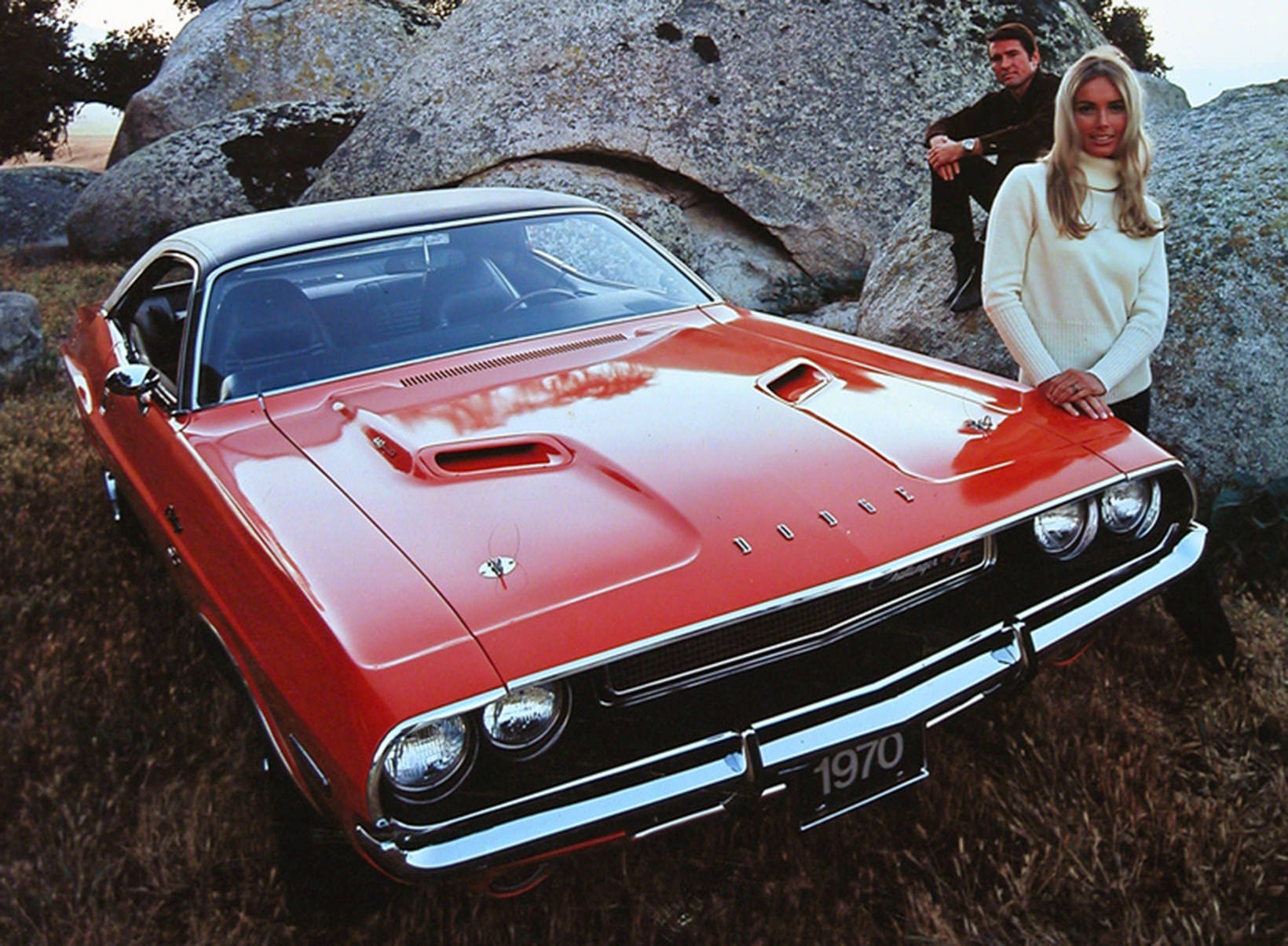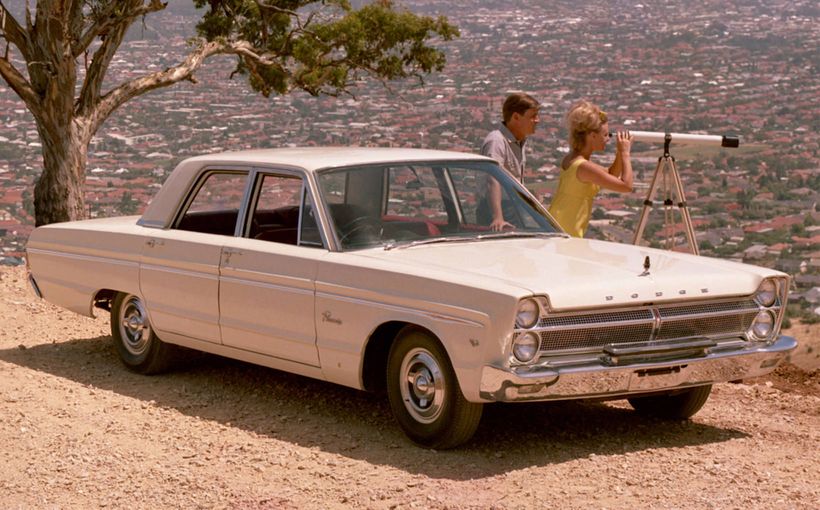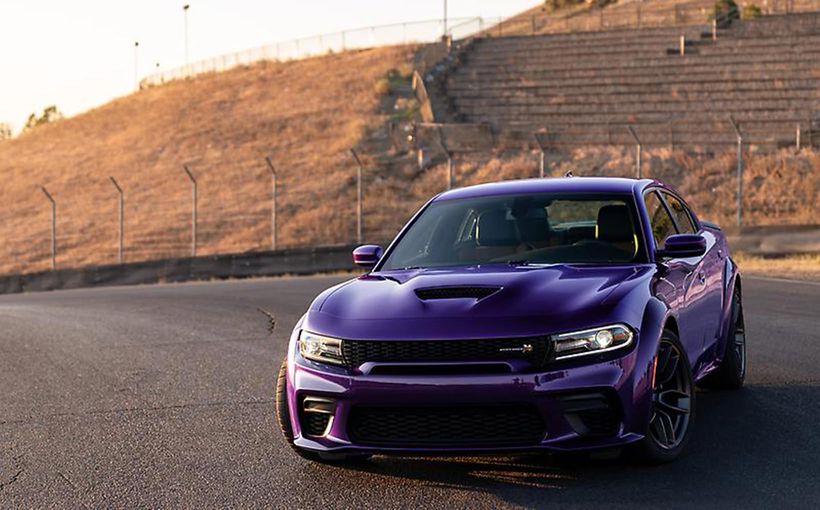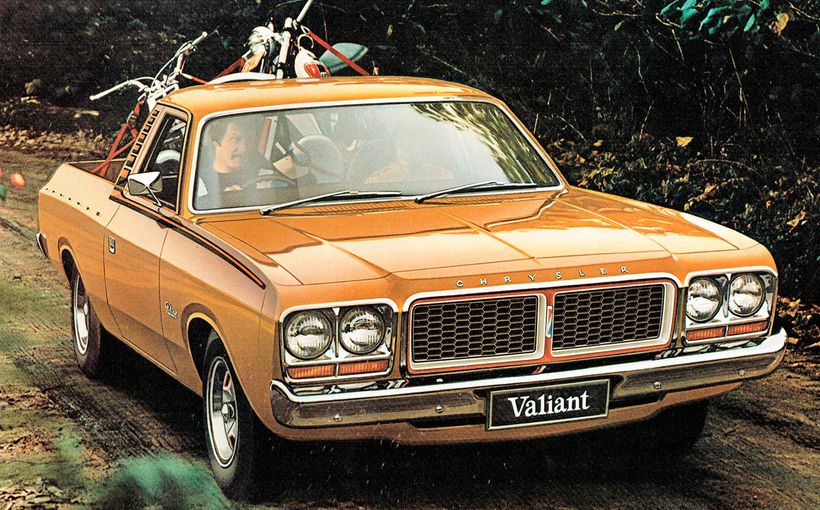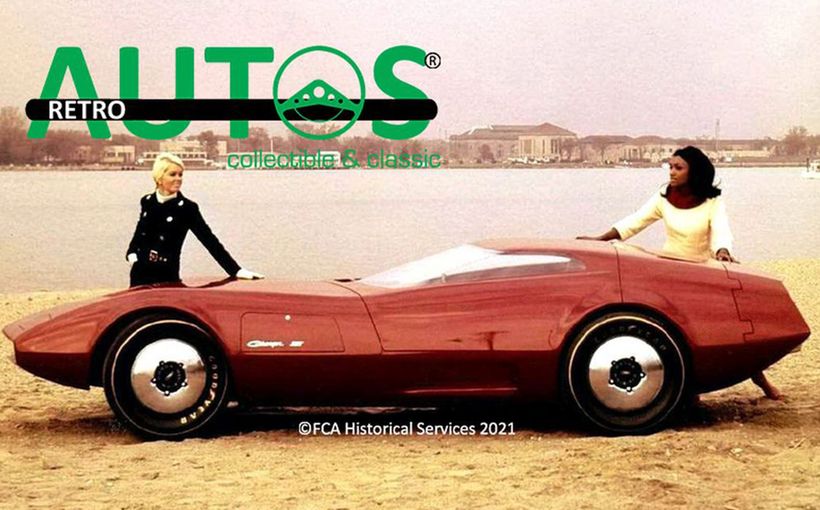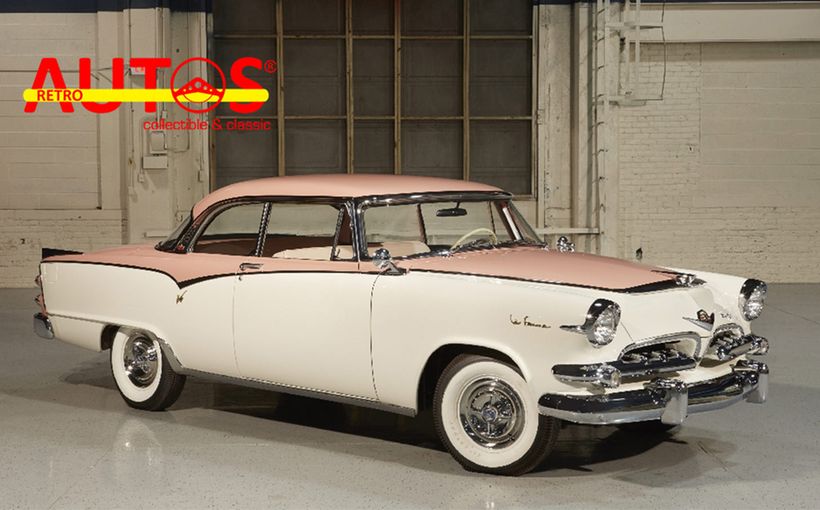Dodge Challenger: pentastar pony car with a Hemi heritage

The instant success of Ford’s Mustang when launched in 1964 triggered a stampede of ‘pony car’ rivals from Detroit. However, by the time Chrysler joined this battle in 1970 with its all-new E-body Dodge Challenger and Plymouth Barracuda packing Hemi V8 power, the compact muscle car category had already peaked.
Unaffordable insurance premiums, tough anti-smog legislation and soon the world’s first oil crisis ensured that Chrysler’s mid-1960s forecasts of the size and strength of this market segment in the 1970s were fatally flawed.
In 1967, product planners were confident that the then-booming pony car segment would reach 1.5 million vehicles annually by 1970 and that with sales of 225,000 cars a year (Challenger and Barracuda combined) Chrysler would have a 15 per cent market penetration. These figures were healthy enough for top brass to approve the new E-body program.

By 1974, though, the Challenger was dead along with its Barracuda sibling. The Challenger’s relatively short life was not only caused by unfortunate timing. Its width and weight, which were excessive for a pony car, also attracted harsh criticism by the motoring press which didn’t help the Challenger’s fortunes.
However, its humble production numbers, big block V8 options including the legendary 426 Hemi and a starring role in the 1971 cult classic car-chase movie Vanishing Point, have driven increasing demand from collectors, particularly for the original 1970 model.
Given this growing appreciation, it was only natural that DaimlerChrysler revived Dodge’s 1970s muscle car icon in the new millennium, with strong retro-styling themes and staggering levels of Hemi V8 performance which will be examined here.

Image: Chrysler
Chasing an elusive pony
By 1967 Chrysler’s compact A-body Dodge Dart and Plymouth Barracuda sales were slipping further behind the larger Ford Mustang, as new rivals including the Mercury Cougar, Chevrolet Camaro and Pontiac Firebird joined the pony car battle.
When Chrysler management approved development of larger pony car competitors for 1970, it was vital that the new platform, codenamed E-body, would share some of the underpinnings and drivetrain components being developed for the new B-body scheduled for 1971 release.
This component sharing would save millions of dollars in design, engineering and tooling, similar to Mustang and its Falcon underpinnings. It would also ensure more engine bay room for not only the corporation’s big block V8s but also ancillaries for factory options like power brakes, power steering, air-conditioning etc which a big block-equipped A-body struggled to accommodate.
Essentially, the new E-body platform was designed to slot between the compact A-body and mid-sized B-body platforms in Chrysler’s A-B-C chassis hierarchy (with C-body being the full-size platform).
In February 1967 Chrysler’s advanced styling studio under Cliff Voss and corporate design chief Elwood Engel established the E-body’s hard points, using the windshield, A-pillars, cowl, firewall, front floorpan, front frame rails and K-member pulled forward from the 1971 B-body program.

Image: Chrysler
Plymouth designer John Herlitz is credited with defining the E-Body’s basic silhouette: “I wanted to put the rear quarters as high as possible and spank the roof down as low as possible and just get the very high hunched look in the rear quarters, allowing the front fenders to become the long, leading design element that ran out past the powerplant to a very dynamic thrust,” he told Musclecar Review.
From then on, though, the only styling component shared by the new Challenger and Barracuda was the windscreen. The Dodge and Plymouth design studios created distinctly different appearances; even the wheelbases varied with the Dodge’s being 2.0 inches (50mm) longer.
The undeniably handsome Challenger looked like no Dodge before it, with a striking four-headlight front and deeply-inset rectangular grille, long and slender horizontal taillights, flush-fitting door handles and bold character lines which kicked-up purposefully over the rear wheel arches.
The pillarless hardtop had frameless side glass inside a pair of long doors that didn’t need front-quarter windows, due to the E-body’s flow-through ventilation system. The windscreen wipers were neatly concealed by the trailing edge of the bonnet.
It rode on a 110-inch (2794mm) wheelbase and was 4859mm long, 1933mm wide and 1293mm high. So, compared to the contemporary 1969-70 Mustang fastback, the Challenger was slightly lower but longer in wheelbase and overall length.
However, its B-body underpinnings created a conspicuous width for its length (it was effectively a shortened B-body). This resulted in a wider track than the Mustang and a muscular broad-shouldered appearance, but it also added considerable weight and made the Challenger look and feel very large inside without the seating intimacy normally associated with a pony car.
The tape measure and scales didn’t lie; the Challenger was almost 5.0 inches (122mm) wider than a Mustang and when optioned with a 426 Hemi almost 130kg heavier than an equivalent Mustang 428 Cobra Jet. These width and weight issues would haunt the Challenger.
Production commenced in August 1969 at the Hamtramck Assembly plant in Michigan and it went on sale in September that year as a 1970 model.

First generation (1970-1974)
At launch the Challenger was available in standard or premium R/T trim, in a choice of hardtop or convertible with numerous performance and interior/exterior enhancement options and packages. There were 22 exterior colours including 10 new High Impact colours.
Hardtop buyers at both trim levels could also choose the Special Edition or SE option, which according to Dodge literature “creates the totally different look of still a third series: vinyl roof, formal roof line with small rear window, leather and vinyl bucket seats and many distinctive exterior and interior trim choices.”
The top-shelf Challenger R/T was a Mercury Cougar/Pontiac Firebird rival, available in hardtop and convertible with uprated suspension and unique styling features like twin bonnet scoops (which could be made functional by simply removing their blanking plates), an optional bumble-bee stripe around the tail (exclusive to Dodge’s ‘Scat Pack’ hi-po models) and pairs of chrome rectangular exhaust tips framed within neat panel cut-outs on each side.

The Challenger offered eight engine choices in 1970. The venerable 225cid Slant Six and 318cid two-barrel V8 were standard issue for base models, but those wanting more performance could option either a 340cid (5.6 litre) four-barrel V8 with 275hp (205kW), big block 383cid (6.3 litre) two-barrel V8 with 290hp (216kW) or ‘Magnum’ 383 four-barrel V8 with 335hp (250kW).
The hot Magnum 383 was standard for Challenger R/T buyers, who had exclusive access to the corporation’s toughest big block V8 options. These comprised the huge 440cid (7.2 litre) Magnum four-barrel with 375hp (280kW), the 440 Six Pack armed with three two-barrel Holley carbs and 390hp (291kW) and the premium 426cid (7.0 litre) Hemi with twin four-barrels and a strip-scorching 425hp (317kW) and 490ft/lbs (664Nm). The 440 Six Pack and 426 Hemi were available with extreme-duty Dana 60 rear axle assemblies.
Standard Challenger transmission was a heavy-duty three-speed manual but many V8 customers, particularly R/T buyers, opted for Chrysler’s New Process A-833 four-speed manual which featured the Hurst-designed ‘Pistol Grip’ shifter with woodgrain handle that was new for 1970.

Image: Chrysler
Challenger also offered Chrysler’s excellent Torqueflite three-speed automatic, in either column-shift or a sporty centre console with ‘Slap Stik’ gear selector, which allowed manual power-shifting from low to second to drive with a lock-out that avoided a miss-shift into neutral or reverse. Just ideal for those impromptu street drags at traffic lights!
The all-new Challenger range looked great but flattered to deceive, judging by road tests at the time. Although Car and Driver’s 426 Hemi R/T hardtop scorched the quarter in 14.1 secs at 103mph (165km/h), the magazine did not hold back in its criticism of the Challenger’s excessive width, weight and cumbersome handling when first tested in late 1969:
“In the flesh, it’s a highly stylized Camaro with strongly sculptured lines, more tumble-home and a grille vaguely in the Charger tradition. There’s no doubt it is a handsome car, but it also has a massive feel that is totally unwelcome in a sporty car; a massive feeling that results from a full 5 inches more width than a Mustang and a need to sign up with Weight Watchers.
“The idea of a ‘sporty car’ weighing within 100 pounds of a comparably equipped (B-body) Road Runner or Super Bee is ridiculous. Along with all of the weight comes a weight distribution problem: 58.9 percent on the front wheels of the Hemi test car. What has happened is Chrysler has built itself a ‘performance’ car that is 300 pounds heavier than a Cobra Jet Mustang and almost as nose-heavy. Nice going, you guys.”

Image: wheelsage
In a 440 auto Challenger, Sports Car Graphic clocked a rapid 14.8 secs at 95mph (152km/h) for the standing quarter but also criticised its low-g cornering response and lack of lateral seat support. It also couldn’t fathom how such a large car could have such small storage: “You’ll have to hold any luggage on your lap, because the trunk is the smallest in the United States, and worse, not even a small suitcase will fit because the spare is square in the centre of it.”
In mid-1970 Dodge hit back with a more agile small block 340 V8-powered variant called the Challenger T/A. With a limited production run of the less than 3,000 units, it was built in the minimum number required to homologate the Challenger for the 1970 US Trans-American Sedan Championship or Trans-Am (T/A) for short.
It was fitted with numerous components needed for Trans-Am duty including a beefed-up ‘Six Pack’ triple two-barrel Holley carb version of the steel-cranked big-valve 340 V8, which for Trans-Am racing was de-stroked to the maximum allowable 305cid with a single four-barrel. There was also a lightweight fiberglass bonnet with functional air scoop and locking pins, plus front and rear spoilers and other track items.
However, the factory-supported Challenger Trans-Am program in 1970 was not successful and was cancelled after one lacklustre season (ditto Plymouth). 1970 sales were disappointing too, with the 83,032 sold not even half of the sales promised by product planners in 1967 to get the E-Body program approved.

Image: Chrysler
1971
Rapid spikes in muscle car accidents and thefts were making insurance premiums unaffordable for many Americans and tougher emission standards were tightening a legislative chokehold on Detroit’s big muscle engines, creating an increasingly bleak outlook not foreseen in 1967.
There were few visual changes for Challenger in 1971, limited to new grille and taillight treatments. The premium R/T model was now available only as a hardtop and the SE and Challenger T/A were axed, along with the 440 Magnum four-barrel. The 440 Six Pack and 426 Hemi big block V8s were still available, but only in R/T hardtops.
Although the Trans-Am program was short-lived, factory-supported 426 Hemi Challengers maintained a formidable quarter mile presence in 1971, with drivers like cigar-chomping ‘Dandy’ Dick Landy. The Hemi Challenger was a natural for NHRA/AHRA heads-up racing, in which cars competed with stock engine and wheel locations and strict power-to-weight limits.
The Challenger also served as the official pace car for the 1971 Indy 500 but an error by the pace car driver moments after the rolling start, when he peeled off the track at high speed and missed his braking marker, resulted in a fearful crash at the end of pitlane with fortunately no fatalities.
A lucky escape for sure but sales numbers didn’t enjoy the same good fortune. In fact, they fell off a cliff, with Dodge dealers finding homes for only 29,883 Challengers in 1971; a devastating drop of almost 66 per cent drop compared to 1970 but admittedly part of an industry-wide decline.

1972
A new grille design extended below the front bumper and the long rectangular taillights were replaced by pairs of oval-shaped light pods.
However, Challenger’s dismal 1971 sales forced dramatic changes for 1972, with an obvious shift away from a performance image, which interestingly is exactly what Chrysler Australia did with its local Charger program the same year. The Challenger’s R/T trim was axed and replaced by the new Rallye series. The convertible body style was also dropped, due to small sales and higher profits generated by vinyl-covered hardtops.
Engine options were slashed from seven to just three with greatly diminished performance. All the big block V8s were gone, leaving only the 225 Slant Six and 318/340 small block V8s. Even the top-shelf 340 was a shadow of its former self, with a cast-iron crank, small-valve heads, lower compression etc to run on newly mandated unleaded petrol.
The drastic rationalisation of the Challenger range did nothing to boost sales, with only 26,658 Challengers finding buyers in 1972. Not surprisingly, many questioned if Challenger would even return in 1973.

Image: Chrysler
1973
The Challenger did survive into the following year, with the 225 Slant Six replaced by the 318 V8 as the standard engine and the 340 V8, in its last year of service, was the only option.
It was a year of only minor changes with front disc brakes now standard on all models and the Rallye now offered as an options package, while new federal vehicle safety laws mandated bumpers that could absorb low-speed collisions up to five mph (8km/h).
However, just when everyone thought the pony car market was all but dead, Challenger rebounded in 1973 with sales of 32,596 representing a significant 18 per cent gain on the previous year. Encouraging for sure, but still a distant third behind Pontiac Firebird with 46,313 sold (up 35 per cent) and Mercury Cougar up more than 11 percent finding 60,628 new owners.

Image: Chrysler
1974
The 318 V8 was still the base engine but a four-barrel 360cid (5.9 litre) version of the venerable small block V8 replaced the smaller 340, with the 360’s extra torque better suited to street driving.
There was a renewed sense of optimism amongst Dodge dealers, given the previous year’s sales boost, when the 1974 Challenger range went on sale on September 25, 1973. Only two weeks later, though, the Arab-Israeli war erupted in the Middle East, choking oil supplies which triggered the world’s first energy crisis. The introduction of strict fuel rationing made many gas-guzzlers, particularly V8s, much harder to sell.
As a result, Challenger sales had collapsed to only 16,437 units when the Challenger (and Barracuda) were quietly withdrawn from sale in April 1974. A sad end to an E-body program which had promised so much when given the green light in 1967, when the world was a very different place.

Image: Chrysler
Second generation (1978-1983)
The oil crisis triggered strong demand for smaller cars in the 1970s. Dodge and Plymouth divisions saw an opportunity to downsize by badge-engineering a luxurious personal coupe sourced from Chrysler’s corporate partner Mitsubishi. In Dodge’s case, it was also a chance to revive the Challenger nameplate which had been gathering dust since 1974.
Mitsubishi’s rear-wheel drive Galant Lambda, which was also sold in Australia as the Chrysler Sigma Scorpion and later Mitsubishi Scorpion, was a two-door, four-seat hardtop rebadged and sold in the US from 1978 as the Dodge Colt Challenger and Plymouth Sapporo.
The Challenger was positioned as the sportier of the two models even though they were mechanically identical, with a choice of 1.6 litre and 2.6 litre four-cylinder engines. Sales were modest and withdrawn from the market before Japanese production ended in 1984.
And not before time for many traditional Mopar performance fans, more than miffed at Chrysler’s misguided use of a famous pony car nameplate on a car that was anything but!

Image: DaimlerChrysler
Third generation (2008-present)
The first decade of the new millennium saw a nostalgic revival of iconic US pony cars from the 1960s and ‘70s in a modern context. Ford, GM and DaimlerChrysler (now Fiat Chrysler Automobiles) respectively created stunning Mustang, Camaro and Challenger concepts that masterfully married signature retro-styling cues with the myriad dictates of modern car design.
The new Challenger launched in 2008 was built on DaimlerChrysler’s LC platform, a shorter wheelbase version of the versatile LX platform shared by the Dodge Charger and Chrysler 300 sedan. With a 116-inch (2946mm) wheelbase, the reborn Challenger was significantly larger than its 1970 ancestor, not only in wheelbase but also length, height and kerb weight. Even so, it could not match the original’s notorious width!
Given the ferocious platform-twisting powertrains Dodge was planning to use, the 2006 concept car’s pillarless hardtop was also significantly strengthened for production with the addition of a stout B-pillar. However, this was cleverly hidden behind the raised side glass, giving the illusion of a pillarless hardtop like the 1970 original.
All 2008 Dodge Challengers were hot SRT8s (SRT being DaimlerChrysler's high performance arm, Street and Racing Technology) equipped with thumping 6.1-litre (370cid) Hemi V8s, five-speed AutoStick automatic transmissions, sports suspensions and big Brembo disc brakes inside 20-inch forged aluminium wheels.
Many high-performance street-legal variants followed, highlighted by the top-shelf SRT8 stepping up to a larger 6.4 litre (392cid) Hemi rated at 350kW/637Nm, which were considerable gains over the 6.1 litre Hemi it replaced.
Peak power was sacrificed to increase torque in the new 6.4 and the stopwatch showed big gains, with the SRT8 scorching the quarter in 12.4 secs at 110mph (176km/h), slicing 0.8 secs from the 6.1 litre’s best time. It could also sprint from 0-100km/h in just 4.5 secs with a stunning 170mph (272km/h) top speed.

Image: DaimlerChrysler
2015 brought a mild facelift with a new grille inspired by the 1971 Challenger, plus quad LED ‘Halo Ring’ headlights, LED tail lights and a functional bonnet intake on Hemi models. The original five-speed automatic transmission was replaced by a new ZF eight-speeder and the potent 6.4 litre SRT8 was renamed the SRT 392.
However, the biggest news for performance fans that year was the release of a devilish SRT variant called the Hellcat. Armed with a bespoke 6.2 litre supercharged Hemi, it was factory rated at a towering 527kW (that’s 707bhp!) and 881Nm (650ft/lbs). The left-side inner driving light was removed to improve airflow to the engine and the wheel wells were reshaped to fit special 20-inch alloy wheels and huge Brembo disc brakes; their eyeball-displacing bite could stop an SRT 392 or Hellcat from 100km/h in just 30 metres.
The Hellcat was also supplied with two ignition key fobs. Use of the black fob capped engine output at ‘only’ 373kW (500hp) while use of the red fob unleashed the full 527kW output.
For a street-legal car the Hellcat’s acceleration was astonishing. On street-legal drag tyres it could leap from 0-100km/h in just 3.6 secs and scorch the quarter in 11.2 secs. On OEM tyres that slipped to 11.6 secs but it still flew through the traps at 200km/h. And get this – top speed was a genuine 200mph (320km/h).

Image: DaimlerChrysler
In 2018 Dodge went ballistic with a limited production wide-body Challenger aimed at serious stock-body drag racing, appropriately named the SRT Demon.
Although street-legal, its sub-10 second quarter-mile performance not only exceeded anything previously imagined for a production car but also sent the world’s exotic supercar manufacturers running for cover. In fact, it was so fast that the NHRA banned it from competition!
The Demon was much more than just a hotter Hellcat. Almost 100 components were unique, starting with the demonic 6.2 litre supercharged Hemi which only shared its cylinder heads with the Hellcat. It was factory rated at an implausible 603kW (808hp) on 91-octane fuel and on 100-octane peaked at 626kW (840hp), or almost double that of the 1970 426 Hemi. Torque was off the charts at 1044Nm (770ft/lbs).
It was also about 100kg lighter than the Hellcat, supplied as standard with only a driver’s seat and four-point race harness. Buyers could add the missing front passenger and rear seats for one dollar each. The Demon was also supplied with a VIN-matched ‘Demon Crate’ containing specialised components for racing, including a plug-in ECU controller which could instantly reset the engine-mapping to optimise performance on 100-octane fuel.
The eight-speed ZF auto had wheel-mounted paddle-shifters plus a transmission brake, which allowed preloading of the drivetrain at high rpm for optimum launch response. There was also an enormous bonnet scoop, twin driving light-bodied air scoops and clever use of the Demon’s air-con to chill the intercooler before a race to increase air density of the inlet charge for maximum power.

Image: DaimlerChrysler
Front and rear wheel-arch flares added 9cm to the width of the car to shroud special-order Nitto 315/40R18 radial tyres built specifically to withstand the Demon’s brute power. These were designed primarily for the drag strip with just enough tread to be street-legal.
On these sticky boots the Demon could nail-gun its driver to the seat with 1.8G of accelerative force, making it the world’s hardest launching street-legal production car. In fact, the Demon was also certified by the Guinness Book of Records as being the first production car that could lift its front tyres clear off the road under acceleration!
Needless to say, Demon performance was face-distorting with 0-100km/h in just 2.3 secs (as fast as a current F1 car), 0-160km/h in 5.1 secs and 9.65 secs at 140mph (225km/h) for the quarter. It was that staggering quarter mile time that triggered the Demon’s track ban, as any sub-10 sec car must be fitted with an NHRA-certified roll cage and other safety equipment.

Image: DaimlerChrysler
Those figures made the Demon the world’s fastest production car from 0-100km/h, faster even than the Bugatti Chiron’s 2.4 secs. The Demon was also the world’s fastest-ever production car over the quarter mile until the Chiron just pipped it with a 9.40 secs pass recorded by Car and Driver.
Even so, it took a USD$3.2 million all-wheel drive hand-built supercar powered by a quad-turbo 8.0 litre W16 with close to 1500bhp to steal that title from a rear-wheel drive supercharged V8 American coupe costing $85,000. By that measure, the Demon is more than worthy of the awe and reverence it commands! Only 3,300 Demons were built, with the last leaving the assembly line in May 2018.
Although the Demon is gone, Dodge has maintained a strong quarter mile focus for SRT-tweaked street-legal Challengers since then, ensuring this pentastar-badged pony car and its awesome Hemi V8 performance heritage continues to thrive in the new millennium.

